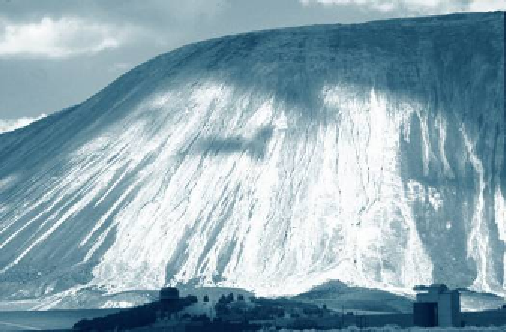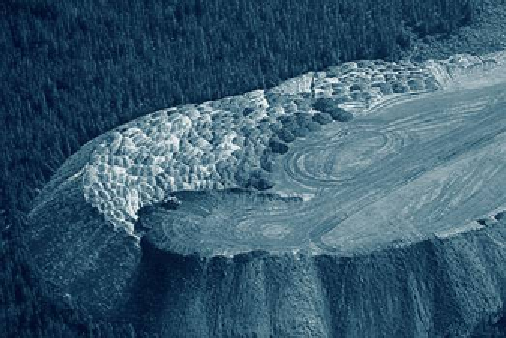Environmental Engineering Reference
In-Depth Information
FIGURE 19.2
Waste Rock Disposal
The area occupied by waste rock storages commonly repre-
sents a large part of the project 'foot-print', often much more
extensive than the mine itself.
A. Kennecott-Bingham Copper Mine, the world largest man-made excavation
Photo:
www.bettermines.org
B. Waste Rock Iron Ore Mines at Wabush, Labrador
Photo: Courtesy of Jim Wark,
www.airphotona.com
●
If the waste rock includes materials that have the potential to generate acid drainage,
the storage should be designed to prevent or control this occurrence, as discussed in
Chapter Seventeen;
●
The surface of the waste rock storage should be amenable to rehabilitation, consistent
with its future land use, and
●
If possible, the new landform should be congruent with its surrounds, meaning that it
should not be visually intrusive.
In practice, the planning of waste rock disposal involves trade-offs between different con-
siderations. For example, the smallest possible foot-print for an above-grade storage would
involve the highest and steepest slopes that could be achieved, which would also represent
the least stable, least accessible and most difficult conditions for rehabilitation.
In practice, the planning of waste
rock disposal involves trade-offs
between different considerations.
19.4 SITE SELECTION FOR WASTE ROCK STORAGES
The main factors influencing the cost of waste rock disposal are:
●
Haulage costs which depend on the distance of the storage site from the mine, and
whether or not the site is elevated with respect to the mine;












Search WWH ::

Custom Search